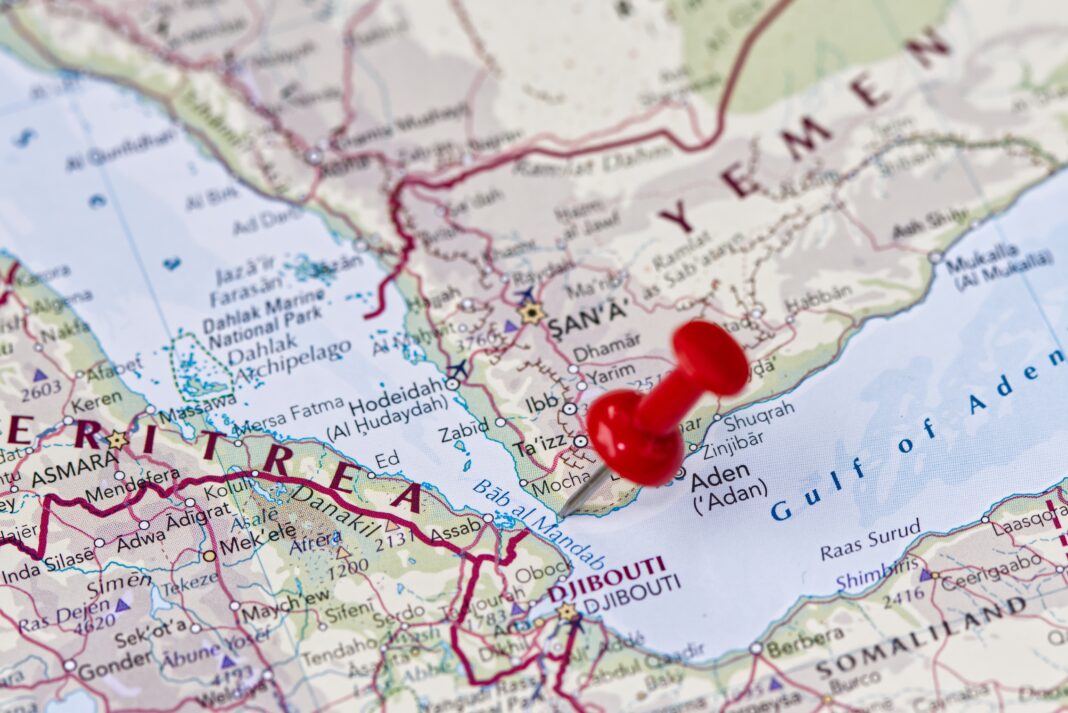by Alessandro De Pascale
The list of major carriers opting to avoid the Suez Canal, the Red Sea, the Strait of Bab al-Mandab and the Gulf of Aden is growing. Between 19 November and 17 December, of the 2,128 vessels that normally transit the Suez Canal (more than 17,000 per year), 55 decided to change their route. Although this is still a relatively small number, it includes a dozen prominent companies such as the Italian-Swiss giant MSC (18.6% of the world maritime transport market), the Danish AP Moller-Maersk (17%), the French CMA CGM (12.6%), the German Hapag-Lloyd (2.7%) and the British oil company BP. This trend suggests the potential for rapid expansion, a cause for concern within the shipping industry.
Ship operators are concerned about possible armed attacks by the Houthi rebels using rockets, drones and boats. In the past month alone, more than a dozen commercial vessels have been attacked. The Iranian-backed Yemeni Sciite rebel group has explicitly stated that it will target ships aiding Israel to force an end to Israeli bombardment of Gaza. The Houthis have declared their intention to carry out ‘operations and attacks on ships passing through the Red Sea’ every 12 hours.
This maritime corridor linking the Mediterranean with the Indian Ocean, is one of the busiest in the world, carry 30% of global container traffic, 12% of international trade and 20% of petroleum products. It allows a ship to travel from Rotterdam (Europe’s largest port) to Shanghai (the world’s largest) in less than a month. Without using the Suez Canal and reverting to the pre-1869 route around Africa, the journey takes up to 15 days longer. This results in longer delivery times, higher costs and consequently an increase in the price of the goods being transported. To compensate for these additional costs, several shipping companies have imposed surcharges on routes that include Israel, adding hundreds of dollars per container. According to Quartz, shipping costs per ship could rise from $400,000 to $1 million.
On Monday 18 December, the United States launched Operation Prosperity Guardian in response to Houthi attacks and to protect ships in transit. This multinational naval coalition includes 10 nations: the US, the UK, Bahrain, Canada, France, the Netherlands, Norway, the Seychelles, Spain and Italy. US Defence Secretary Lloyd Austin announced the decision after the US and UK navies reported over the weekend that their destroyers had successfully intercepted and shot down 15 drones in the maritime corridor. In the area, the USA has its own military bases in the United Arab Emirates, Qatar and Djibouti.
The European Union’s diplomatic-military mission, EU NAVFOR Somalia-Operation Atalanta, has operated in the waters of the Horn of Africa since December 2008. Based on four UN Security Council resolutions adopted that year, 17 countries (with personnel, ships, aircraft and helicopters) are participating in this mission, which aims to prevent and suppress acts of maritime piracy that began in the early 2000s off the coasts of the Horn of Africa.
Following the US announcement, Houthi Major General Yusuf al-Madani said: “Any escalation in Gaza is an escalation in the Red Sea… Any country or party that intervenes between us and Palestine will face consequences.” The Yemeni group’s spokesman, Abdel Salam, added: “The coalition formed by the US to protect Israel and militarise the sea without any justification will not stop Yemen from continuing its legitimate operations in support of Gaza.” According to senior Houthi official Mohammed al-Bukhaiti, “even if America succeeds in mobilising the whole world, our military operations will not halt, regardless of the sacrifices it may entail.” While a member of the Houthi Supreme Political Council, Mohammed Ali Al-Houthi, told Iranian Al-Alam television: “Every Country that acts against us will have its ships targeted in the Red Sea.”
In 2014, the Houthis launched a rebellion against Yemen’s internationally recognised government, unleashing a civil war that in 8 years caused over 300 thousand victims (including many civilians) and a devastating humanitarian crisis. Fighting, backed by Iran, they have been fighting a military coalition led by neighbouring Saudi Arabia and including Western and regional allies. Currently, the Houthis dominate most of Yemen, including the capital Sanaa and certain western and northern regions. Over the years, with support from Iran, they have built up a substantial military arsenal, including anti-ship ballistic missiles, which they have successfully used against merchant ships in the Red Sea. In October, the Houthis attempted a direct attack on Israel by firing missiles and drones into the southern part of the country, missing their targets some 2,000 kilometres away. Despite failing to hit their intended destinations, these attacks have managed to disrupt some of the world’s commercial shipping.
On the cover image, the Red Sea region with the Bab al Mandab Strait ©Below the Sky/Shutterstock.com
























